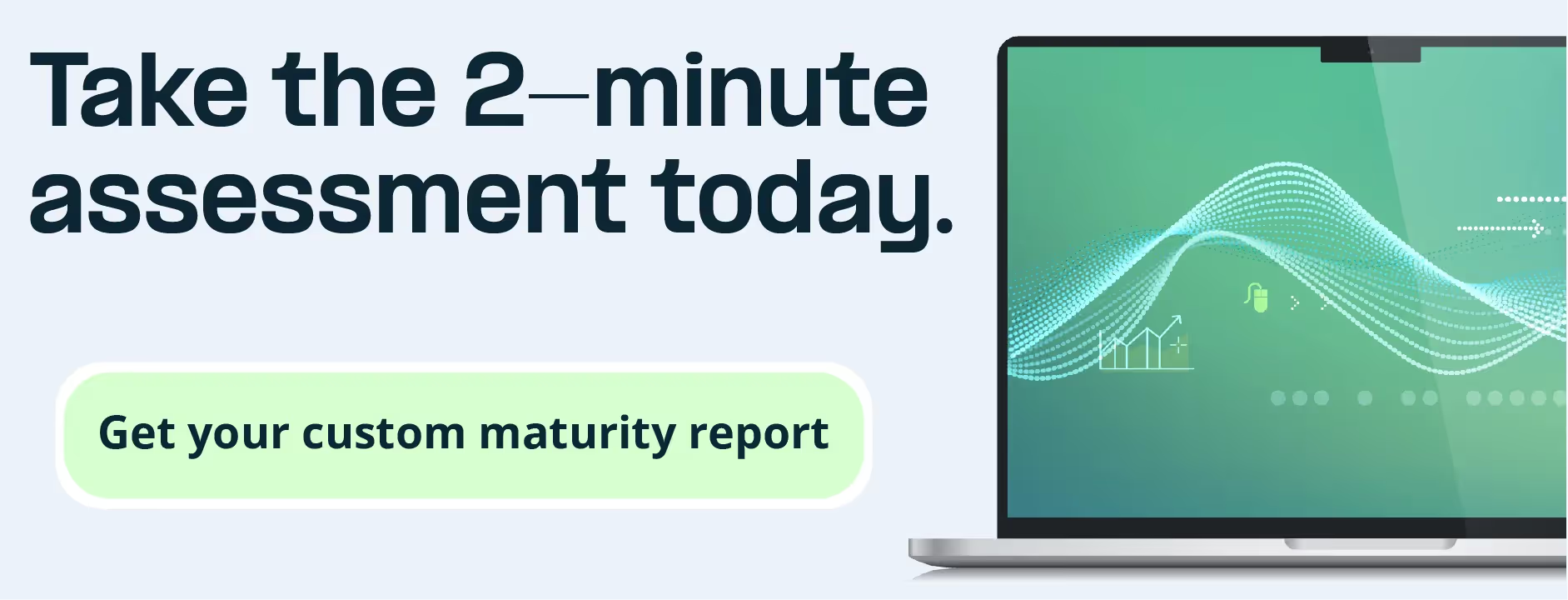Tax is getting more complex. Your systems shouldn’t be. Learn why tax tech maturity matters and how to measure yours.
Indirect tax has shifted from compliance function to strategic enabler, but most tax systems weren’t built for today’s complexity.
As real-time mandates, digital reporting, and global expansion pressure tax teams to do more, legacy setups are showing their limits. What used to be “good enough” is now slowing businesses down or putting them at risk.
This isn’t just a tooling problem. It’s a maturity one.
Check your tax tech maturity score with this 2-minute assessment.

What mature tax teams get right
High-performing tax functions don’t just file returns on time. They embed tax automation across the business, into pricing, onboarding, invoicing, and analytics.
They standardize how data flows, automate edge cases, and integrate systems so tax decisions happen instantly, not after the fact. They don’t scramble to meet mandates, they anticipate them.
And they spend far less time cleaning up errors or chasing approvals because their processes are documented, connected, and monitored.
The result? Fewer errors. Faster operations. Lower risk.
Ready to assess your own setup? Here’s what matters
The Fonoa Tax Tech Maturity Assessment helps you benchmark your tax operations across three critical dimensions:
Data: Is your tax data accurate, complete, and available when and where it’s needed?
Process: Are your workflows consistent and well-defined or reliant on tribal knowledge and workarounds?
Automation: How manual is your setup? Are systems integrated, or is compliance held together by spreadsheets and late nights?
These signals reveal how well your tax function can scale, adapt, and support the business. Not just today, but as complexity grows.
What you’ll learn in two minutes
After six questions, you’ll receive a personalized PDF that includes:
- Your maturity score (0–100)
- A mapped tier from Ad-hoc to Leading
- A breakdown of your strengths and gaps
- Benchmarks to compare against peers
- Tailored next steps to improve
The five maturity tiers reflect how embedded and future-ready your tax setup is:
- Ad-hoc: Manual, reactive, and fragmented
- Developing: Some automation, but still reliant on workarounds
- Established: Foundational tools in place, but gaps in scale or oversight
- Transforming: Systems are connected, AI is emerging, and teams are proactive
- Leading: Tax is strategic, real-time, and fully embedded in operations

Whether you're looking to build a business case or simply understand where things stand, the assessment is a practical starting point.
Take the Fonoa Tax Tech Maturity Assessment now to unlock a custom roadmap to ensure your Tax Function can lead with confidence.
FAQs: what to know before you start
Who is this assessment for?
- Heads of Tax: To benchmark current capabilities, uncover inefficiencies, and build a roadmap for automation and control
- CFOs and finance leaders: To understand compliance risk, cost-to-serve, and how tax maturity can unlock margin or speed
- IT and engineering teams: To evaluate integration needs, identify gaps in automation, and align systems with tax requirements
- Payment and product owners: To ensure tax isn’t blocking onboarding, invoicing, or time-to-market in new regions
- Platform and operations leaders: To reduce manual overhead and scale tax logic globally without custom builds
Do I need to prep?
No prep required. Just answer based on how your current setup works today. The value comes from clarity not perfection.















